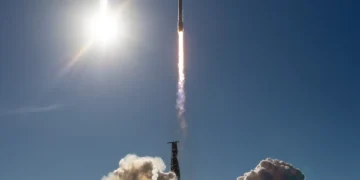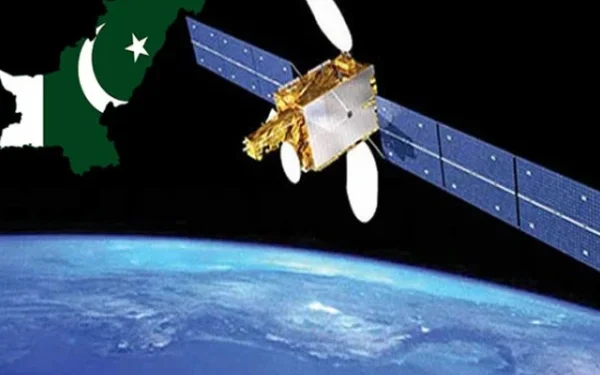Islamabad, Pakistan :In a landmark moment for Pakistan’s space and technology sectors, the country successfully launched its most advanced remote sensing satellite into orbit from China’s Xichang Satellite Launch Center. This achievement marks a significant leap forward for Pakistan’s space capabilities and aligns closely with its national technological development roadmap under the “Vision 2047” and the National Space Policy.
The launch was executed with full technical cooperation between Pakistan’s space agency Suparco (Space and Upper Atmosphere Research Commission) and Chinese space authorities. A delegation of Pakistani scientists and engineers was present in China to oversee the final integration, testing, and launch protocols of the satellite.
Launch Event Monitored in Real-Time from Pakistan
The Institute of Space Technology (IST) in Islamabad and Suparco’s headquarters in Karachi actively monitored the launch through a dedicated command and control interface. Live telemetry data was received and analyzed by mission control teams in both cities, ensuring full Pakistani oversight of the critical launch phase.
The launch was also streamed live for local media and key stakeholders, with officials and academics from universities, defense institutions, and climate research agencies present to witness the historic event.
What is a Remote Sensing Satellite and Why It Matters
A remote sensing satellite is a spaceborne instrument designed to observe Earth’s surface from orbit using sensors that operate in different electromagnetic bands, such as visible light, infrared, and radar. These satellites help in collecting valuable data on:
- Land use and urban growth
- Agricultural patterns and crop health
- Water resources and soil moisture
- Deforestation and reforestation
- Glacier monitoring and climate change
- Disaster prediction and response
Pakistan’s new satellite is equipped with multi-spectral and panchromatic imaging sensors, allowing for high-resolution Earth observation. This means it can deliver clear images of terrain, infrastructure, vegetation, and water bodies at regular intervals.
Key Capabilities of the Satellite
1. Urban and Regional Planning
As Pakistan faces rapid urbanization, real-time data from the satellite will enable smarter city planning, better land zoning, and help prevent uncontrolled sprawl. Planners will now have the tools to develop housing schemes, transport networks, and water supply systems with data-driven precision.
2. Agriculture Monitoring
Agriculture remains a vital sector of Pakistan’s economy. The satellite can track crop cycles, identify water stress, detect pest infestations, and forecast yields, helping both farmers and policymakers. It supports the development of precision agriculture, improving food security and economic sustainability.
3. Environmental Conservation
With the country facing serious challenges in climate change, forest loss, and biodiversity decline, the satellite provides timely images to track ecological changes. It will help monitor:
- Glacier retreat in the north
- Illegal logging in forest reserves
- Air and water pollution hotspots
- Protected wildlife zones
4. Disaster Management and Early Warnings
One of the most critical applications of this satellite will be in the early detection and management of natural disasters such as:
- Floods: Monitoring river levels and rainfall accumulation
- Earthquakes: Ground deformation through interferometric analysis
- Landslides: Detecting changes in mountain slopes
- Droughts: Identifying water stress and barren regions
Suparco’s satellite will significantly strengthen Pakistan’s National Disaster Management Authority (NDMA) and Provincial Disaster Management Authorities (PDMAs) in issuing early warnings and deploying rescue resources.
Scientific and Strategic Significance
This launch has been described by domestic and international experts as a major scientific and strategic advancement for Pakistan. It sends a strong message that Pakistan is not only keeping pace with emerging space nations but is now stepping up to contribute actively in the global space community.
According to space analyst Dr. Adeel Shabbir:
“This is a clear sign that Pakistan is investing seriously in dual-use space technologies—beneficial for both civilian development and strategic awareness.”
While the satellite is primarily civilian in nature, its high-resolution imaging could also provide strategic reconnaissance capabilities when required, enhancing national defense readiness.
A Product of Vision 2047 and National Space Policy
The spokesperson for Suparco emphasized that the satellite is a practical manifestation of Pakistan’s Vision 2047, which sets long-term technological and developmental goals for the country’s centennial year.
The National Space Policy, recently updated in 2023, outlines key objectives for expanding Pakistan’s:
- Earth observation capabilities
- Satellite communication systems
- Research and education in space sciences
- Indigenous satellite manufacturing and launch abilities
This successful launch is directly aligned with these objectives and represents the growing maturity of Pakistan’s space ecosystem.
Pakistan-China Space Collaboration: A Strategic Partnership
The satellite was launched aboard a Chinese Long March rocket, highlighting the close and evolving cooperation between Pakistan and China in the field of aerospace.
Key Milestones in Pakistan-China Space Collaboration:
- Paksat-1R: Pakistan’s first communication satellite launched in 2011 from China
- PRSS-1: Pakistan Remote Sensing Satellite-1 launched in 2018, also from China
- Launch of academic CubeSats in collaboration with Chinese universities
China continues to offer technical expertise, training, and financial support for Pakistan’s space program. Analysts see this partnership as part of the broader China-Pakistan Economic Corridor (CPEC) strategy, which increasingly includes aerospace and geospatial dimensions.
Expert Reactions and Public Response
The scientific community in Pakistan has widely lauded the launch. University researchers, especially those in geoinformatics, environmental sciences, and data analytics, say the satellite will give them direct access to high-quality geospatial data for:
- Academic research
- Climate modeling
- Urban simulations
- Machine learning applications in agriculture and weather prediction
Public response has also been enthusiastic, with hashtags like #PakistanInSpace, #Suparco, and #SpaceSuccess trending on local social media platforms shortly after the launch.
Opportunities for Youth and Future Development
This achievement is also expected to create educational and career opportunities in:
- Satellite data processing
- Geographic Information Systems (GIS)
- Space engineering and systems design
- Artificial intelligence for remote sensing
Several Pakistani universities, including IST, NUST, GIKI, and Punjab University, are already working on developing academic programs and research labs focused on space science and remote sensing technologies.
Looking Ahead: What Comes Next for Pakistan’s Space Program?
With this successful launch, Suparco is now expected to focus on:
- Enhancing ground segment infrastructure for receiving, processing, and distributing satellite data
- Developing indigenous capabilities for satellite design, integration, and testing
- Launching a satellite for communication services to improve internet and telephony coverage in remote regions
- Participating in international space cooperation platforms with friendly countries like Turkey, Malaysia, and China
Additionally, Suparco has hinted at exploring satellite constellations, interplanetary research, and even public-private partnerships in the coming decade.
Conclusion: A Leap Toward Technological Sovereignty
The launch of Pakistan’s advanced remote sensing satellite is more than a technological achievement—it is a declaration of intent, capability, and ambition. In a world increasingly shaped by space-based tools and technologies, Pakistan has taken a confident step toward technological sovereignty, sustainable development, and regional leadership in space science.
With continued investment, policy support, and international cooperation, Pakistan is poised to turn its Vision 2047 into a reality—and this launch may very well be the beginning of that exciting journey.

























